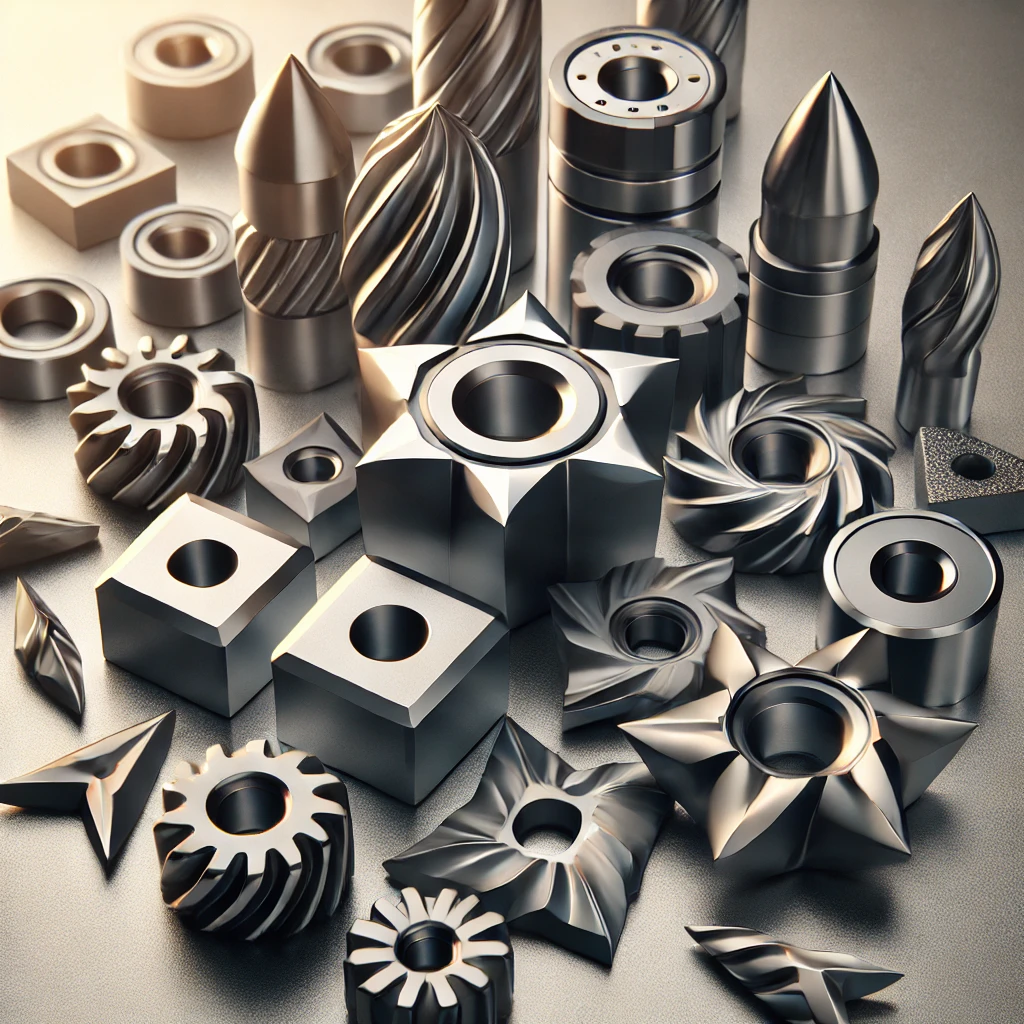Guide to Selecting the Right Carbide Inserts for Your CNC Machine
Carbide inserts play a crucial role in CNC machining, affecting precision, tool life, and overall productivity.

Selecting the right carbide inserts for your CNC machine is essential to achieving optimal cutting performance, reducing costs, and ensuring high-quality outputs. This guide will walk you through the different factors to consider when choosing carbide inserts, their types, coatings, materials, and applications.
Understanding Carbide Inserts
Carbide inserts are replaceable cutting tips used in CNC machining, made primarily from tungsten carbide—a material known for its hardness and wear resistance. These inserts come in various shapes, coatings, and compositions to cater to different machining needs.
Why Use Carbide Inserts?
-
Longer Tool Life – Carbide is significantly harder than high-speed steel (HSS), offering extended durability.
-
Higher Cutting Speeds – Carbide inserts allow machining at higher speeds, increasing efficiency.
-
Better Surface Finish – Precision-ground inserts improve finish quality.
-
Cost-Effective – Despite a higher initial investment, carbide inserts last longer and reduce tool change frequency.
-
Versatility – Available for various materials, including steel, aluminum, and titanium.
Factors to Consider When Selecting Carbide Inserts
1. Material to be Machined
Different materials require specific carbide inserts. For example:
- Steel – Requires wear-resistant and heat-resistant inserts.
- Aluminum – Needs sharp-edged, polished inserts to prevent built-up edges.
- Cast Iron – Demands high toughness and impact-resistant inserts.
- Titanium & High-Temp Alloys – Need inserts with advanced coatings to resist heat and wear.
2. Insert Shape and Geometry
Carbide inserts come in various shapes, affecting stability and cutting forces:
-
Round (R) – Strongest shape, used for heavy roughing.
-
Square (S) – Good for medium to rough machining.
-
Triangle (T) – Versatile, balancing strength and cutting precision.
-
Diamond (D, V, and C) – Used for finishing and detailed work.
-
Hexagonal & Octagonal – Multi-edge inserts, maximizing tool usage.
3. Insert Size
Larger inserts handle higher loads but require more power, while smaller inserts are suitable for fine finishing.
4. Insert Grade and Coating
The grade and coating determine the performance under different machining conditions.
-
Uncoated Carbide – Ideal for aluminum and non-ferrous metals.
-
CVD (Chemical Vapor Deposition) Coated – Suitable for steel and cast iron due to its wear resistance.
-
PVD (Physical Vapor Deposition) Coated – Works well for finishing and interrupted cuts.
-
Cermet Inserts – Offer excellent surface finish for finishing operations.
5. Cutting Edge and Chip Breaker Design
-
Sharp Edge Inserts – Best for light cutting and non-ferrous metals.
-
Chamfered Edge – Provides stability and is suited for roughing.
-
Chip Breakers – Designed to control chip flow, prevent chip accumulation, and improve surface finish.
6. Cutting Conditions
-
Speed – Higher speed requires inserts with heat-resistant coatings.
-
Feed Rate – Higher feed rates need tougher inserts to withstand cutting forces.
-
Depth of Cut – Determines insert shape and strength requirements.
Types of Carbide Inserts for Different CNC Applications
Turning Inserts
Used for lathe operations, turning inserts come in various shapes for roughing and finishing applications.
Milling Inserts
For milling operations, inserts are available for face milling, shoulder milling, and high-feed milling.
Drilling Inserts
Used in CNC drilling operations, these inserts ensure accurate hole sizes with minimal wear.
Grooving and Threading Inserts
Designed for producing precise grooves and threads, available in various profiles.
Boring Inserts
Used in CNC boring operations for enlarging existing holes with high accuracy.
How to Extend the Life of Carbide Inserts
-
Proper Cutting Parameters – Adjust speed, feed rate, and depth of cut based on material and insert type.
-
Use the Right Coolant – Helps in heat dissipation and chip evacuation.
-
Regular Tool Inspection – Check for wear and replace inserts before failure.
-
Use the Correct Holder – A rigid tool holder reduces vibrations and enhances insert life.
-
Optimize Chip Control – Proper chip breakers help in smooth machining and prevent insert damage.
Conclusion
Selecting the right carbide inserts for your CNC machine requires understanding various factors such as material type, insert shape, coating, cutting conditions, and application. Investing in the correct carbide inserts enhances productivity, extends tool life, and ensures superior machining results. By following the guidelines in this guide, you can make an informed choice and optimize your CNC machining operations for maximum efficiency and cost-effectiveness.
Frequently Asked Questions
PVD-coated carbide inserts (ISO P30-P40) are best for stainless steel due to their heat resistance and toughness.
Signs of wear, chipping, poor surface finish, and increased cutting forces indicate it’s time to replace the insert.
While some inserts are versatile, it’s best to choose inserts optimized for specific materials to maximize performance.
CVD coatings are thicker and better for roughing, while PVD coatings are thinner and ideal for finishing.
Choose based on chip control needs: roughing operations need strong chip breakers, while finishing requires lighter ones.
Carbide inserts offer higher hardness, better heat resistance, and longer tool life compared to HSS.
A CNMG (80-degree diamond) insert is versatile for general-purpose turning.
No, uncoated inserts are mainly for non-ferrous metals; coated inserts are better for steel and cast iron.
Keep them in their original packaging, away from moisture, dust, and extreme temperatures.
Coolant improves tool life by reducing heat, preventing built-up edges, and enhancing chip evacuation.



